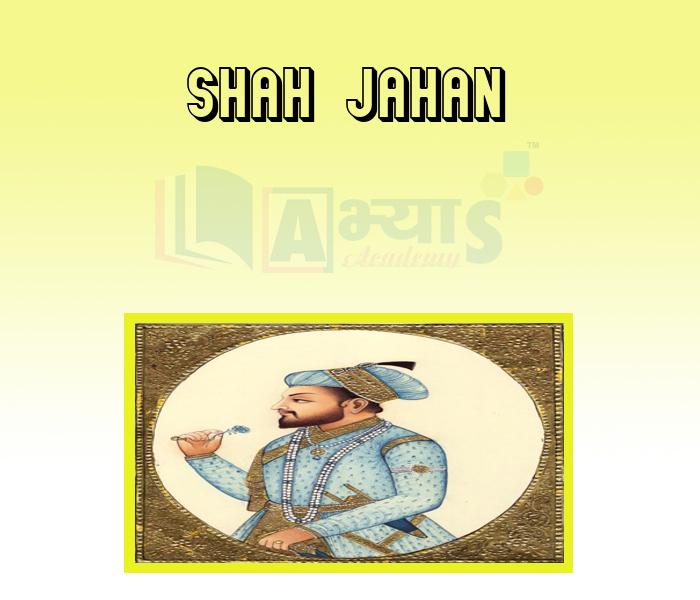Shah Jahan










Shah Jahan
Shah Jahan (1627-1658 AD)
SHAHAB-UD-DIN MUHAMMAD KHURRAM SHAH JAHAN I: (1592 -1666)
He was the emperor of the Mughal Empire in India from 1627 until 1658. The name Shah Jahan comes from Persian meaning "king of the world. He was the fifth Mughal ruler after Babur, Humayun, Akbar, and Jahangir. While young, he was a favorite of his legendary grandfather Akbar the great Badshah Shah Jahan was born as Prince Shihab-ud-din Muhammad Khurram, in 1592 in Lahore, India (current day Pakistan) as the third and favorite son of the emperor Jahangir. His grandfather Akbar gave the name Khurram - Persian for 'joyful'. His early years saw him receive a cultured, broad education and he distinguished himself in the martial arts and as a military commander while leading his father's armies in numerous campaigns - Mevar, the Deccan, and Kangra etc.
The mother of Shah Jahan was _________________. | |||
| Right Option : A | |||
| View Explanation | |||
Who waived the Pilgrimage Tax to Banaras and Allahabad. | |||
| Right Option : D | |||
| View Explanation | |||
Jama Masjid of Delhi was built in which century ? | |||
| Right Option : C | |||
| View Explanation | |||
Students / Parents Reviews [10]
Being a parent, I saw my daughter improvement in her studies by seeing a good result in all day to day compititive exam TMO, NSO, IEO etc and as well as studies. I have got a fruitful result from my daughter.

Prisha Gupta
8thMy experience with Abhyas academy is very good. I did not think that my every subject coming here will be so strong. The main thing is that the online tests had made me learn here more things.

Hiya Gupta
8thAbhyas Methodology is very good. It is based on according to student and each child manages accordingly to its properly. Methodology has improved the abilities of students to shine them in future.

Manish Kumar
10thA marvelous experience with Abhyas. I am glad to share that my ward has achieved more than enough at the Ambala ABHYAS centre. Years have passed on and more and more he has gained. May the centre flourish and develop day by day by the grace of God.

Archit Segal
7thOne of the best institutes to develope a child interest in studies.Provides SST and English knowledge also unlike other institutes. Teachers are co operative and friendly online tests andPPT develope practical knowledge also.

Aman Kumar Shrivastava
10thMy experience with Abhyas is very good. I have learnt many things here like vedic maths and reasoning also. Teachers here first take our doubts and then there are assignments to verify our weak points.

Shivam Rana
7thIt has a great methodology. Students here can get analysis to their test quickly.We can learn easily through PPTs and the testing methods are good. We know that where we have to practice

Barkha Arora
10thIt was good as the experience because as we had come here we had been improved in a such envirnment created here.Extra is taught which is beneficial for future.

Eshan Arora
8thAbhyas is a complete education Institute. Here extreme care is taken by teacher with the help of regular exam. Extra classes also conducted by the institute, if the student is weak.

Om Umang
10thIt was a good experience with Abhyas Academy. I even faced problems in starting but slowly and steadily overcomed. Especially reasoning classes helped me a lot.
